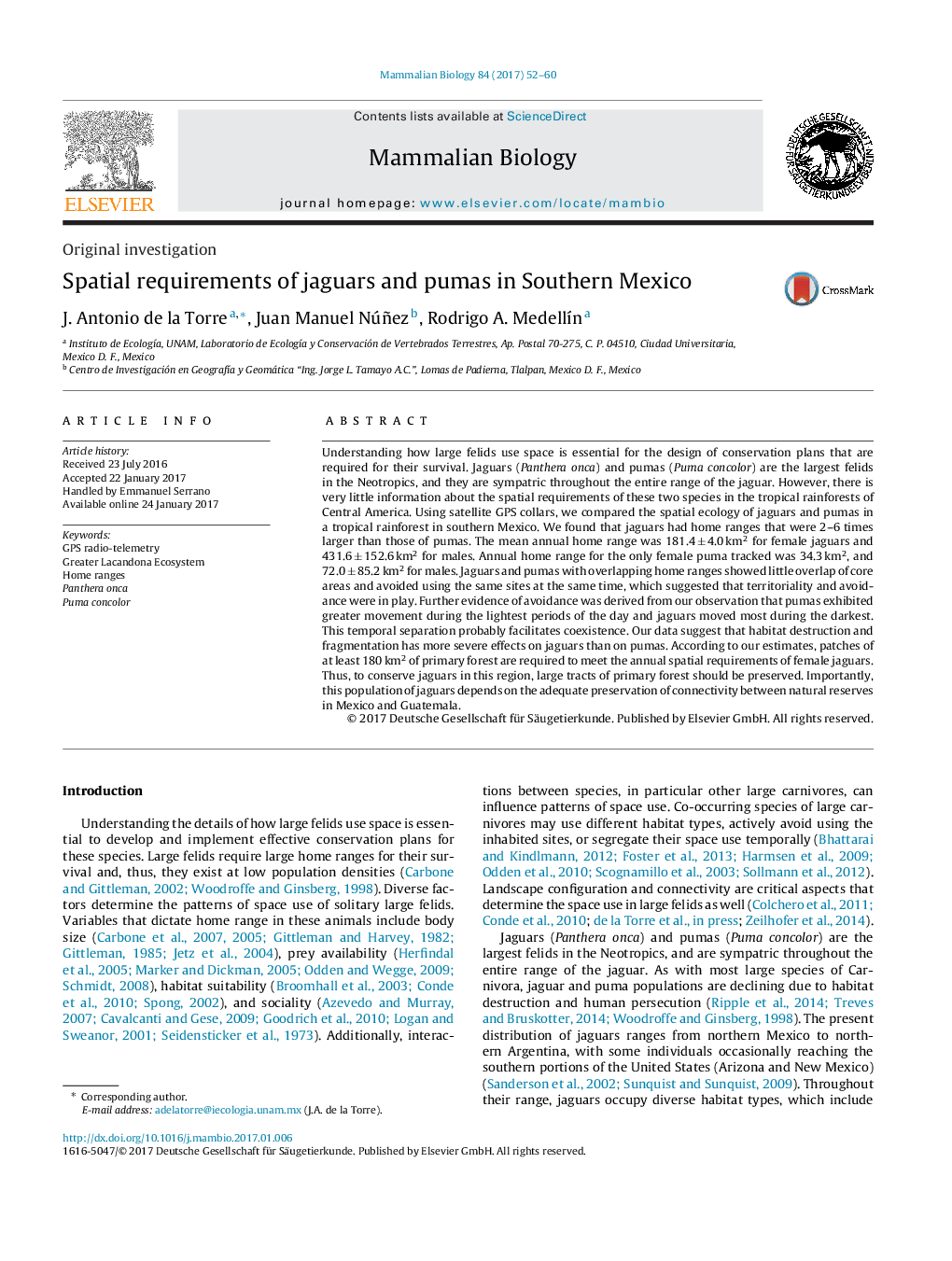| Article ID | Journal | Published Year | Pages | File Type |
|---|---|---|---|---|
| 5533793 | Mammalian Biology - Zeitschrift für Säugetierkunde | 2017 | 9 Pages |
Understanding how large felids use space is essential for the design of conservation plans that are required for their survival. Jaguars (Panthera onca) and pumas (Puma concolor) are the largest felids in the Neotropics, and they are sympatric throughout the entire range of the jaguar. However, there is very little information about the spatial requirements of these two species in the tropical rainforests of Central America. Using satellite GPS collars, we compared the spatial ecology of jaguars and pumas in a tropical rainforest in southern Mexico. We found that jaguars had home ranges that were 2-6 times larger than those of pumas. The mean annual home range was 181.4 ± 4.0 km2 for female jaguars and 431.6 ± 152.6 km2 for males. Annual home range for the only female puma tracked was 34.3 km2, and 72.0 ± 85.2 km2 for males. Jaguars and pumas with overlapping home ranges showed little overlap of core areas and avoided using the same sites at the same time, which suggested that territoriality and avoidance were in play. Further evidence of avoidance was derived from our observation that pumas exhibited greater movement during the lightest periods of the day and jaguars moved most during the darkest. This temporal separation probably facilitates coexistence. Our data suggest that habitat destruction and fragmentation has more severe effects on jaguars than on pumas. According to our estimates, patches of at least 180 km2 of primary forest are required to meet the annual spatial requirements of female jaguars. Thus, to conserve jaguars in this region, large tracts of primary forest should be preserved. Importantly, this population of jaguars depends on the adequate preservation of connectivity between natural reserves in Mexico and Guatemala.
